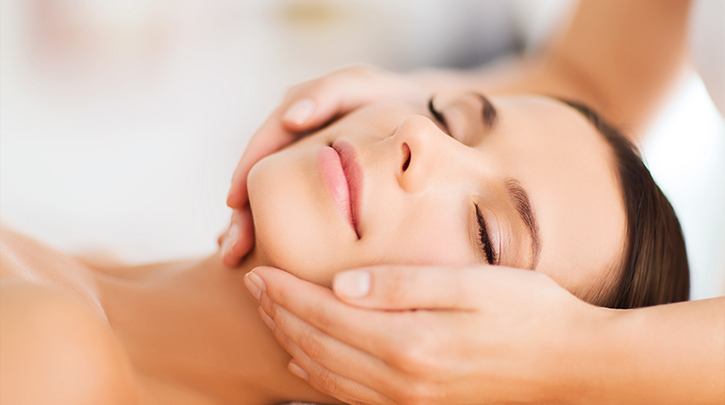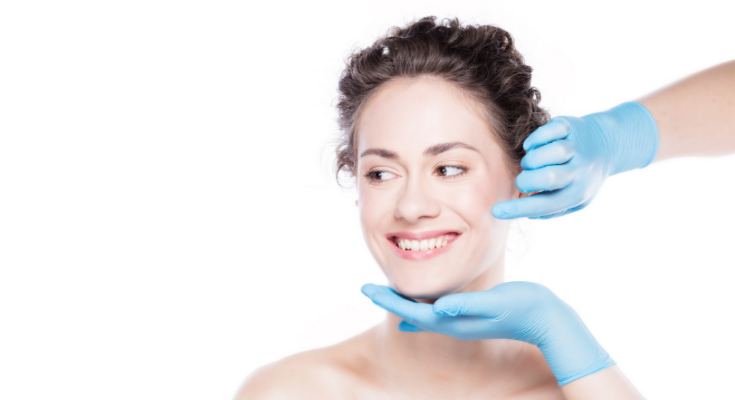

Like most consumers, you’re likely attuned to the latest trends, whether that happens to be beauty, media, or perhaps fashion is your forte. Further still, celebrity looks, digital influencer recommendations, social media hashtags, and technological innovations can all help to push these trends to higher popularity. More often than not, it’s these popular culture trends that help shape consumer demand and influence the latest and greatest medical aesthetic treatments. While many of these trends are just a flash in the pan, there are some that stick—and for good reason. How do you determine which trendy aesthetic treatments are worth testing out, which have staying power in 2019, and which ones aren’t worth the investment?
To get a little insight into where recent medical aesthetic trends are headed and to ensure you’re able to make an informed decision for yourself, let’s start with some statistics from the American Society of Plastic Surgeons’ (ASPS) 2018 statistics report.
That’s nine-times higher than the number of surgical procedures performed. In fact, demand for minimally invasive procedures is projected to continue to grow, up 228% since 2000 while surgical procedures have dropped five percent in the same period.
The trend towards minimally invasive treatments is certainly for good reason, too. As our schedules grow busier, minimally invasive procedures offer quicker treatments with little to no downtime, meaning equally minimal interruptions to your schedule. As well, with recent advances in medical aesthetics technology and techniques, it’s possible to achieve impactful results without going under the knife. Finally, with minimally invasive options being on the market since the 1980s and coming a far way since then, you can consider this trend to stick around and offer safe treatment options for all skin types and aesthetic goals.
Botox is a name we’ve likely all heard. It’s popped up in movies and magazines with many celebrities and influencers singing its praises—when used in moderation, that is. For this reason, it’s not a big shock that it’s still trending in 2019. For reference, Botox, Dysport, and Xeomin are all brand names for similar agents injected under the skin to reduce the appearance of wrinkles, such as in the forehead and between the eyebrows. They’ve been on the market for some time and are generally considered a safe alternative to more invasive aesthetic procedures.
For those considering injectables, these injections are fairly quick to administer, taking an average of about 10 minutes following consultation. However, they offer an equally simple quick fix. In other words, treating wrinkles and rhytides with injectables will only offer a temporary plumping effect that may last a couple months, but will not offer support to overall skin health. For a more lasting effect that requires less maintenance over time, a non-surgical customized wrinkle reduction treatment plan may work better for you.
Fat grafting, which refers to the extraction of your own fat from one area of the body to be injected elsewhere to provide more shape and contour, is gaining in popularity, particularly for perfecting the peach. In fact, fat grafting appears to be replacing buttock implants, according to the 2018 ASPS survey. However, similar to implants, grafting can require downtime and won’t improve the appearance of your silhouette over time—for the most part, what you see at the end of the appointment is what you get (though it will fade over time as fat is absorbed and moves).
For those considering this trending aesthetic treatment, non-surgical body shaping treatments utilizing radio frequency (RF) energy may be a better bet for longer-term improvements with quick treatments and no downtime required. Using these treatments, RF energy is converted to heat below the skin’s surface, breaking down fat cells while kickstarting skin’s natural collagen and elastin production levels for a smoother, firmer-looking silhouette. Because these treatments work with your body’s natural processes, results are cumulative and visibly improve up to four months following your final treatment session.
Often considered a treatment that traditionally appeals to males alone, females continue to be a growing demographic among hair restoration patients and the trend is expected to continue as we work toward eliminating the stigma. As well, advances in hair restoration treatment technology appear to be increasing the effectiveness of and interest in minimally invasive hair restoration treatments, particularly the Follicular Unit Extraction (FUE) technique.
Using this technique, hair restoration treatment providers extract naturally-occurring groups of hair follicles in smaller grafts containing one to three hairs on average, rather than removing a long strip as with the Follicular Unit Transplantation (FUT) method. These smaller grafts are then sorted to make it easier for your treatment provider to create a natural-looking hairline during implantation. With this method, your hair restoration procedure is more customizable, with your provider being better able to implant grafts at an angle that best matches the way your hair naturally grows. The FUE method is minimally invasive, leaves no linear scarring, and offers a quicker recovery period—all key benefits for those who may be unable to take too much time away from their busy schedule.
While treatment trends and statistics can better help you narrow down which aesthetic treatments might be right for you, it’s always best to consult with a qualified and certified aesthetic treatment provider. Based on your aesthetic goals, your treatment provider will be able to create a customized treatment plan, designed just for you, using the most advanced technology and techniques available. To get started today, locate a certified treatment provider near you using the search field below.
Find a certified treatment provider near you.



Search below to find a provider near you and to learn about our non-surgicial treatments with ARTAS®, NeoGraft®, Venus Bliss™, Venus Versa™, Venus Legacy™, Venus Velocity™, Venus Viva™, Venus Freeze Plus™, Venus Glow™, and Venus Heal™.
For more information call: +27 31 535 7241 // [email protected] // Liberty Life Building, 21 Aurora Drive, Umhlanga Ridge Durban, 4301, South Africa
REGULATORY CLEARANCES [ More ]
Venus Versa™ has CE Mark as a multi-application device intended to be used in aesthetic and cosmetic procedures. The SR515 and SR580 applicators have CE Mark for the treatment of benign pigmented epidermal and cutaneous lesions and treatment of benign cutaneous vascular lesions. The HR650/HR650XL and HR690/HR690XL applicators have CE Mark for the removal of unwanted hair and to effect stable long-term or permanent hair reduction for Fitzpatrick skin types I-IV. The AC Dual applicator has CE Mark for the treatment of acne vulgaris. The DiamondPolar™ applicator has CE Mark for non-invasive treatment of moderate to severe facial wrinkles and rhytides on females with Fitzpatrick skin types I-IV. The OctiPolar™ applicator on the Venus Versa™ system has CE Mark for temporary body contouring via skin tightening, circumferential reduction, and cellulite reduction. The NanoFractional RF™ (Viva) applicator has CE Mark for dermatological procedures requiring ablation and resurfacing of the skin.
NeoGraft® 2.0 has CE Mark with indication for use in suction-assisted follicular extraction and re-implantation for males and females.
Venus Epileve™ has CE Mark for hair removal, permanent hair reduction (defined as the long-term stable reduction in the number of hairs re-growing when measured at 6, 9 and 12 months after the completion of a treatment regimen), and the treatment of pseudofolliculitis barbae for all Fitzpatrick skin types. Venus Epileve™ is also CE-Marked for hirsutism.
Venus Legacy™ has CE Mark for the temporary increase of skin tightening, circumferential reduction, cellulite reduction, and wrinkle reduction.
Venus Velocity™ has CE Mark for hair removal, permanent hair reduction (defined as the long-term stable reduction in the number of hairs re-growing when measured at 6, 9 and 12 months after the completion of a treatment regimen), and the treatment of pseudofolliculitis barbae for all Fitzpatrick skin types.
Venus Viva™ has CE Mark for the use in dermatologic and general surgical procedures requiring ablation and resurfacing of the skin, and the treatment of moderate to severe facial wrinkles and rhytides in Fitzpatrick skin types I-IV with the DiamondPolar™ applicator.
Venus Freeze Plus™ has CE Mark for treatment of moderate to severe facial wrinkles and rhytides using the DiamondPolar™ applicator, and CE Mark for the treatment of cellulite reduction, increase of skin tightening, and temporary circumferential reduction on the OctiPolar™ applicator.
Venus Freeze™ has CE Mark for treatment of moderate to severe facial wrinkles and rhytides using the DiamondPolar™ applicator, and CE Mark for the treatment of cellulite reduction, increase of skin tightening, and temporary circumferential reduction on the OctiPolar™ applicator.
Venus Glow™ provides a dermal rejuvenation treatment that works to open up and deep-clean pores. Venus Concept is the exclusive distributor for Venus Glow™.
Copyright © 2025 Venus Concept. All rights reserved.
You are entering our website. For other country/regions and language options, please click the button below.
Click HereAre you a physician or aesthetician? Please visit our medical and aesthetic professional website to learn more.
Click Here